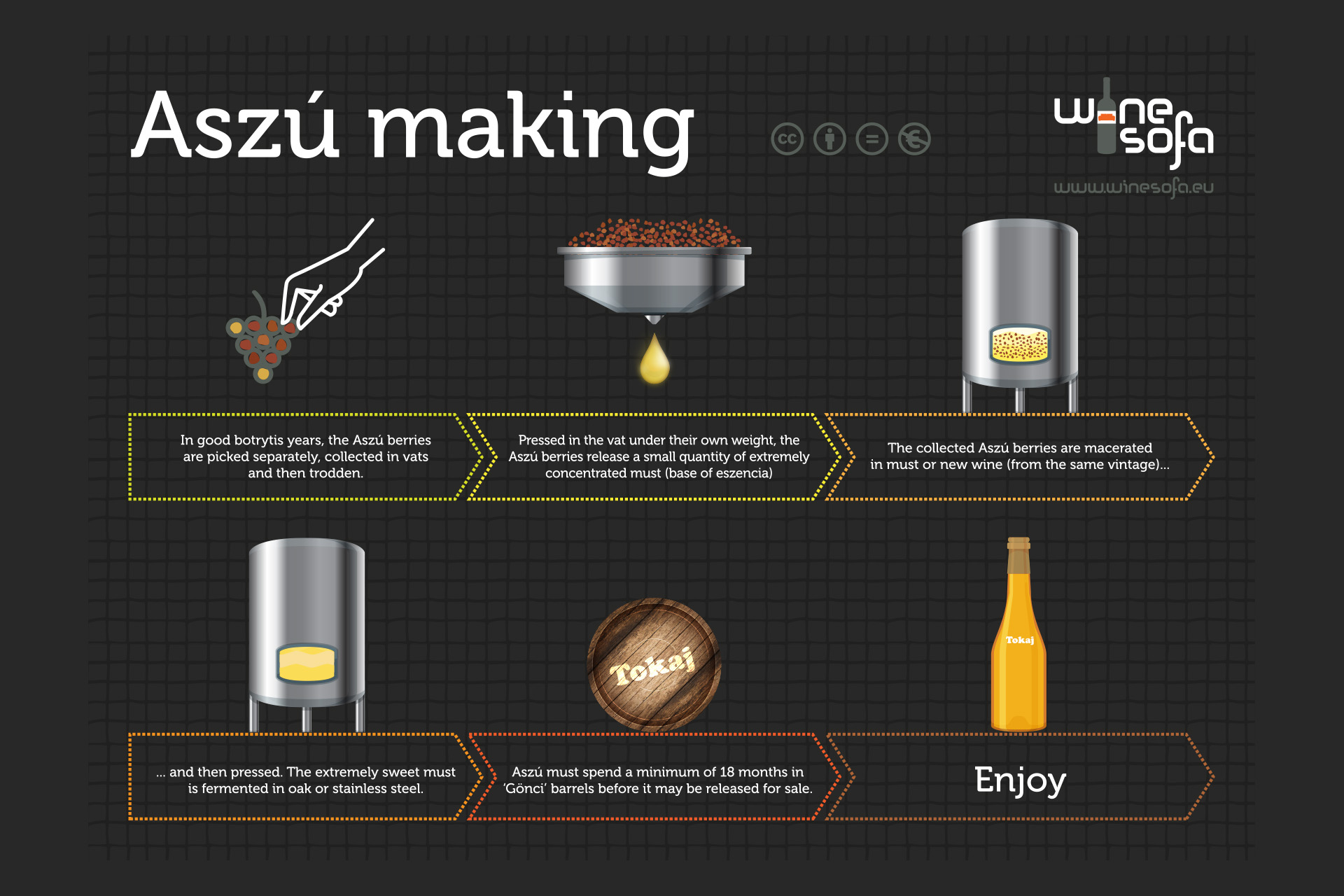Where were raisins first soaked in wine to make it sweeter? And what has this got to do with Tokaj? We investigated this, so a summary of the history of this wine culture follows.
Sweet wines are among the oldest and most sought after drinks in the world, and it’s not by chance. It’s hard to understand today, but barely a hundred years ago, sweet flavours were not a typical part of everyday life. People got sweetness mostly in the form of honey, jam, and ripe or dried fruit. So, it’s hardly surprising that, in the past, sweet wines cold were only affordable for the richest people and nobility.

Tokaji Aszú flavor profile by WineSofa
This was the case in ancient times, where sweet wine stood out from the rest, not only because of its flavour, but also for its shelf life. We know from Homer and Hesiod that Greek sailors took sweet red wines with them on their voyages. Odysseus also got the Cyclops drunk on such a wine, Ismaros, the most famous and sweetest wine of the age, in order to escape with his comrades. This had to be drunk diluted with twenty parts water, so that people didn’t get completely drunk!

Odysseus and his crew are blinding Polyphemus (source: Wikipedia)
These wines, including the oldest sweet wine still in existence, Commandaria from Cyprus, are closely related to today’s Italian passito wines. Commandaria was described by Hesiod as the Cypriot manna, but Richard the Lionheart was also a big fan, supposedly calling it “the king of wines and the wine of kings”. Sounds familiar, doesn’t it? The French King Louis IV, the Sun King, supposedly said this about Tokaj Aszú…

Tokaj wine region infoposter by WineSofa
The essence of passito wines is that grapes are dried in the sun after they are harvested and then the resulting concentrated berries are either pressed or, if they are already as dry as raisins, soaked in fermenting must or wine and then pressed again. It’s familiar again when we look at the graphics, isn’t it?

Aszú making infoposter by WineSofa
Among the best-known of these wines are the wonderful Passito di Pantellaria, Vin Santo, Recioto di Soave or Recioto della Valpolicella. The ancient Greeks learnt about drying the grapes from the Egyptians and Persians, but the method was also known to the Phoenicians, and then later Rome and Carthage, and, of course, Byzantium.

Wine making in Egypt (source: Naturally Wine)
The pinnacle of the raisin culture, on the other hand, was the strengthening Arab tribes, who put all their creativity into drying the fruit because of the ban on alcohol. The best Italian passito, Pantelleria, was born from Arab raisins, the Greek winemaking process and Norman precision.

Passito di Pantelleria (source: Ketumbar)
Tokaji Aszú appeared sometime in the 16th century, after Syrmia, which is now the Serbian Fruska Gora, came under Turkish occupation. Before that, great sweet wines had already been made in Syrmia, probably from raisined grapes. However, Tokaj had an ace up its sleeve, a mould called botrytis cinerea, which attacks the grape clusters. The fungus dies in the dry late autumn that follows and the berries dry naturally on the vine, which is where the name Aszú comes from (from the Hungarian aszalódik, meaning to dry).

Fruska Gora infoposter by WineSofa
The winemaking technique from this point is a recognised ancient method. Must or wine is poured over the shrivelled/dried grapes, they are then pressed, aged in oak (or rather amphora in the past in the Mediterranean) and bottled. A true gift of nature, raisin-like aszú berries are created in the Tokaj vineyards, without needing to be dried.

How a ripe grape berry evolves to an aszú berry? (source: Disznókő Winery)
Yet, how did the Hungarians learn this process? From the works of ancient authors? Quite possibly! Or perhaps from the Greek, Serbian, Dönmeh and Jewish merchants who came from the east in possession of this knowledge? We’ll look into this too at some point…

Harvesting Iranian Raisins (source: Taher)






